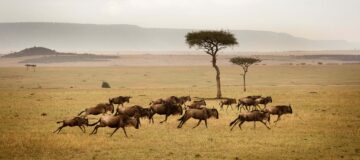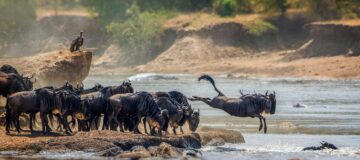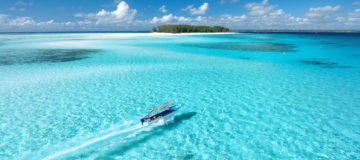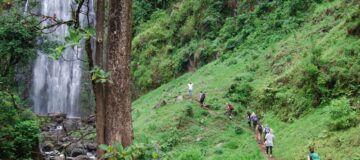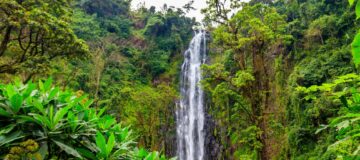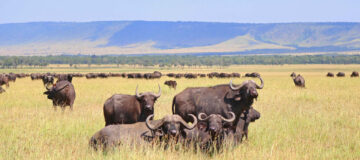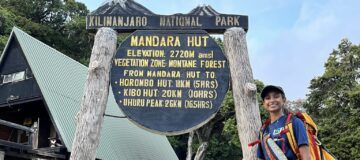Tanzania Safaris
Tanzania safaris: In Tanzania, you may find a safari practically anywhere you look. The second-largest nation in East Africa has lived with it for many years. Tanzania has one of the most diverse ranges of animals and landscapes of any country in Africa. Tanzania safaris offer an incredible array of safari experiences, ranging from the traditional savannah destinations of the Serengeti National Park, Tarangire National Park, and Ngorongoro Crater to the beaches and coral reefs of Zanzibar. And that’s before you learn about the hidden treasures like crowd-free wildlife viewing in the incredibly wild and distinctive landscapes of Nyerere (formerly Selous) and Ruaha National Park, or chimpanzee trekking in the unspoiled rainforests of Mahale and Rubondo.
Here are some of our top reasons for taking a Tanzanian safari, from amazing year-round wildlife watching to the Wildebeest Migration and stunning beach destinations:
The Great Migration
The yearly Wildebeest Migration is the greatest time to visit Tanzania since it provides an unparalleled opportunity to see animals up close. Tanzania safaris itineraries that focus mostly on The Migration offer visitors an amazing display of the country’s most stunning natural phenomena. Approximately two million antelope, zebra, and wildebeest brave a fearsome predator gauntlet as they make their way through the Serengeti-Mara environment in search of fresh pasture. The herds are so massive that they are visible from space, making this amazing show one of the last major terrestrial animal movements on Earth.
The majority of the Migration takes place in Tanzania’s premier conservation area, the Serengeti National Park. To have a great view of the Wildebeest Migration, you need to remain as near to the herds as possible, and on mobile camps on a regular basis. Several lodging options provide quick access to destinations where rivers cross. It is important to note that during the river crossing season, which runs from June to October, there are only a few well-located safari camps available. Plan your Tanzanian safari at least a year in advance if you want to see the spectacular river crossings up close. You might also choose to visit at the times when the herds give birth and graze over the plains; this is less crowded with tourists and just as impressive to witness. Plan your journey to align with the herds’ movements by chatting with one of the Tanzania Safari Experts.
Ngorongoro Crater and the Big Five
A massive volcano erupted and collapsed on itself, creating the Ngorongoro Crater some 2.5 million years ago. The Crater is the greatest spot in East Africa to observe the Big 5 and is now a protected habitat and World Heritage Site. The floor of the Crater is around 260 square kilometres (100 square miles), and it is approximately 600 meters (1 970 feet) deep. There are various places where you can view a variety of ecosystems supporting about 30,000 animals in Tanzania by visiting these safari destinations in Tanzania. Tanzania has the most dependable sightings of the Big 5. It is one of the Seven Natural Wonders in Africa. The destinations of some of the densest populations of big mammals in Africa.
National parks and reserves of Tanzania
Tanzania Safaris enthusiasts who are daring and have visited the more well-known safari tour destinations in Northern Tanzania should explore Tanzania’s less-frequented reserves and parks. There are Savannahs, wetlands, lakes, and rainforests are just a few of the lesser-known safari destinations in Tanzania provide incredible wildlife encounters away from the crowds. There are many Tanzania safari tour activities like fishing, off-roading, walking, watercraft safaris, and night drives that are forbidden in national parks like the Serengeti. Discover Ruaha National Park, Tanzania’s best-kept secret and the home of the country’s greatest elephant population. Discover Nyerere National Park (Selous Game Reserve), one of Africa’s most important sanctuaries for wild dogs. One of Tanzania’s most unique safari experiences is chimpanzee hiking; go to Rubondo Island or the Mahale Mountains.
Tanzania Beaches
After a safari in Tanzania, many people unwind on a beach surrounded by palm trees and the warm blue waves of the Indian Ocean. A sun-kissed tropical island is the perfect spot to think back on your amazing experience before returning to the grind of everyday life, especially after a long and dusty day on the safari. After breakfast, it’s easy to take a quick flight from a Tanzanian safari camp to a powder-soft beach in time for sunset cocktails. One of the most charming locations for honeymoons worldwide is Zanzibar. A private island getaway paradise is Mnemba Island. A top diving Tanzania safari tour destination in the world is Pemba Island. Mafia Island is best visited from October to April to swim with migratory whale sharks.
Visit Mount Kilimanjaro
This is the highest free-standing mountain on Earth; Mount Kilimanjaro, is not simply the highest peak in Africa. To reach the ‘Roof of Africa,’ which rises about 6 kilometres (4 miles) above Tanzania’s lowlands, may require five or more days of climbing. There are various paths that lead to the summit, each with different demands on skills, time spent ascending, crowd density, and scenic views. To arrange a Kilimanjaro walk that suits your needs and preferences, speak with one of our experts. A Tanzanian safari in one of the neighbouring parks or reserves can be seamlessly added to your Kilimanjaro adventure.
Birds and wildlife of Tanzania
Tanzania is home to more than 1000 different bird species, making it one of the best birding safari destinations. Tanzania is the country with the highest concentration and diversity of wildlife in Africa. There are many world-class wildlife safari tour destinations, such as national parks and game reserves, such as the Selous Game Reserve, the largest wildlife reserve in the world, and home to more than 120,000 elephants, 160,000 buffalo, and 2000 rhinos. Large populations of wild dogs, crocodiles, and hippos can also be found in Selous.
Zanzibar
There is no better way to cap off a Tanzanian safari journey than to unwind on one of Zanzibar’s stunning white sand beaches for a while. Zanzibar, often known as the “Spice Island,” has welcomed travellers from all over the world for ages. Over the ages, Persians, Chinese, Arabs, Indians, and many more have all sailed their ships into Zanzibar’s port with the intention of trading and occasionally stealing. Don’t miss the opportunity to discover Stone Town’s exquisite Arabic architecture and spice bazaar. If diving is more your style, enrol in a course at one of the many dive shops the nearby resorts offer. The island’s waters are crystal clear and teeming with a vast variety of marine life.




